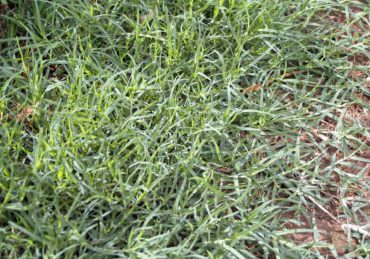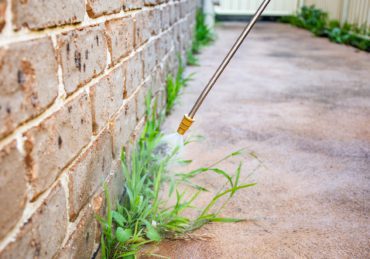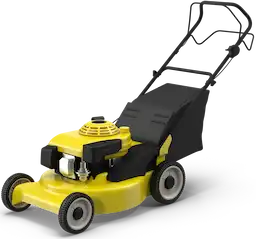When it comes to lawn care, a common debate arises: should you mow before or after fertilizer? Many experts suggest mowing first as the preferred method, as it allows the fertilizer to reach the soil more effectively, promoting better nutrient absorption. Cutting the grass before fertilizing removes excess height and thatch, ensuring that the granules or liquid fertilizer can make direct contact with the soil rather than getting caught in long blades of grass. However, the timing of both mowing and fertilizing plays a crucial role in maximizing effectiveness. Factors such as grass type, weather conditions, and the type of fertilizer used all influence the best approach. Some argue that lawn mowing after fertilization helps distribute nutrients more evenly, particularly with liquid fertilizers. Ultimately, understanding how mowing and fertilization work together can lead to a healthier, greener lawn.
Can You Do Both Mowing and Fertilization on the Same Day?
Mowing and fertilizing on the same day can be effective if done correctly, but it also carries potential risks. Cutting grass first can improve fertilizer absorption by removing excess height and thatch, allowing nutrients to reach the soil more directly. This is especially beneficial for granular fertilizers, which need good soil contact to break down properly. However, there are some drawbacks to applying fertilizer immediately after mowing. Freshly cut grass can be more sensitive, and if the fertilizer contains high nitrogen levels, it may increase the risk of fertilizer burn, causing yellow or brown patches. Additionally, if grass clippings on your lawn are left behind, they can create an uneven distribution of nutrients, leading to inconsistent lawn growth. To avoid these issues, it’s best to mow a few days before fertilizing, giving the grass time to recover while still allowing for optimal nutrient absorption. Proper timing ensures a healthier, more resilient lawn.
Easily hire the best lawn & landscape pros working in your neighborhood.
Best Timing for Mowing and Fertilizing Your Lawn
For optimal results, it’s best to wait 24 to 48 hours after mowing before applying fertilizer. This waiting period allows the grass to recover from the stress of cutting while ensuring that the fertilizer reaches the soil effectively. While mowing is important before fertilizing, applying fertilizer too soon after can increase the risk of nitrogen burn. By waiting a day or two, you promote even nutrient distribution and reduce stress on the lawn.
What Happens If You Fertilize Right After Mowing?
Mowing right before fertilizing can lead to several issues, including fertilizer runoff, nutrient loss, and increased lawn stress. Freshly cut grass is more vulnerable, and applying fertilizer too soon may cause chemical burns or uneven absorption. Additionally, mowing removes a layer of grass, exposing the soil, which can increase the chances of fertilizer runoff if rain or watering follows to quickly. Uneven nutrient absorption is another concern, as damage grass blades may struggle to take in fertilizer efficiently. To prevent these issues, it’s best to wait 24 to 48 hours before fertilizing.
Should You Mow Your Lawn Before Fertilizing?
Mowing before fertilizing helps nutrients reach the soil more effectively, leading to a healthier and more vibrant lawn. When grass is too tall, fertilizer – especially granular types – can get caught in the blades rather than making direct contact with the soil. Shorter grass ensures that fertilizer is evenly distributed and absorbed where it’s needed most, reducing waste and improving efficiency. Additionally, mowing removes excess thatch, a dense layer of dead grass and organic material that can block fertilizers from penetrating the soil.
Thick thatch prevent nutrients from reaching grassroots, leading to poor absorption and uneven growth. By cutting the grass first, you create a clearer pathway for fertilizer to be absorbed efficiently, promoting stronger root development. This process also prevents unnecessary runoff, ensuring that more nutrients remain in the soil rather than washing away due to rain or watering. Furthermore, reducing thatch buildup improves overall lawn health by allowing better air and water circulation. A well-maintained lawn with minimal thatch is more resilient to disease, pests, and drought. Ultimately, mowing before fertilizing maximizes the effectiveness of nutrients, leading to a greener, healthier lawn with more consistent growth and fewer wasted resources.
Mowing Your Lawn Before Applying Fertilizer
Proper lawn preparation before fertilization ensures maximum nutrient absorption and healthy growth. First, mow the grass to an appropriate height, removing excess length and thatch to help fertilizer reach the soil. Next, clear away grass clippings and debris to prevent uneven fertilizer distribution. If needed, aerate the lawn to improve soil penetration, especially in compacted areas. Then, check the weather forecast – avoid fertilizing before heavy rain to prevent runoff. Finally, lightly water the lawn a day before fertilizing to create slightly moist soil, which helps nutrients absorb effectively. Following these steps ensures the fertilizer works efficiently for a healthier, green lawn.
Should You Leave Grass Clippings After Mowing?
Deciding whether to mulch or bag grass clippings before fertilizing depends on lawn conditions. Mulching can be beneficial as it returns nutrients to the soil, improving organic matter and moisture retention. However, if the grass is too long or there is excessive thatch, bagging is the better option to prevent clippings from blocking fertilizer absorption. For optimal results, mow regularly to produce fine clippings that decompose quickly. If fertilizing, ensure clippings are minimal to allow even nutrient distribution.
Easily hire the best lawn & landscape pros working in your neighborhood.
When to Fertilize After Mowing the Lawn
The ideal time to apply fertilizer after mowing is at least 24 to 48 hours later. This waiting period allows the grass to recover from the stress of cutting, ensuring it is in the best condition to absorb nutrients effectively. Mowing creates small wounds on the grass blades, making them more susceptible to stress, and applying fertilizer too soon – especially one high in nitrogen – can increase the risk of burning or damaging the lawn. By giving the grass time to heal, you allow the roots to regain strength and improve their ability to take in nutrients.
Additionally, waiting before fertilizing helps ensure that the soil is ready to absorb the nutrients without interference from loose grass clippings or thatch. If fertilizer is applied too soon after mowing, clippings left behind may block granules from reaching the soil, leading to uneven distribution. This delay also helps reduce the risk of fertilizer runoff, as the grass has had time to settle and provide a more stable surface for nutrient absorption. Proper timing maximizes the effectiveness of the fertilizer, promoting stronger root growth and greener, healthier grass. For the best results, mow first, wait at least a day or two, and then apply fertilizer to achieve optimal lawn care.
Does Grass Type Affect When to Fertilize?
Cool-season and warm-season grasses have different fertilization needs based on their growth cycles. Cool-season grasses, such as fescue and Kentucky bluegrass, grow actively in spring and fall, requiring fertilizer during these periods to support root development and lush growth. They benefit from a balanced fertilizer in early spring and a higher nitrogen feed in fall for winter resilience. Warm-season grasses, like Bermuda and zoysia, thrive in summer and should be be fertilized in late spring through early fall when growth peaks. Over-fertilizing at the wrong time can stress both types, so timing and nutrient balance are key for healthy lawns.
Best Time to Mow and Fertilize in Different Seasons
The best time to mow and fertilize depends on the season. In early spring, mow once the grass starts actively growing, then fertilize about two weeks later to encourage strong roots. Avoid fertilizing too early, as it may promote weak growth. In summer, mow regularly but fertilize warm-season grasses only, as cool-season grass may go dormant in extreme heat. In fall, mow until growth slows, and apply a high-nitrogen fertilizer to prepare the lawn for winter dormancy. Proper timing ensures nutrients support healthy. growth while preventing stress, leading to a lush, resilient lawn year-round.
How to Prepare Your Lawn for Fertilization
Before fertilizing, several key steps helps ensure maximum nutrient absorption and overall lawn health. First, mow the grass to an appropriate height, typically around 2.5 to 3 inches, to remove excess length and create a clear path for fertilizer to reach the soil. Avoid cutting too short, as this can stress the grass and make it more susceptible to damage.
Next, check for thatch buildup – a thick layer of dead grass and organic material that can block fertilizer from penetrating the soil. If the thatch layer is more than half an inch thick, dethatching is necessary to break it up and improve nutrient absorption. Removing excess thatch also enhances air and water circulation, promoting stronger root development.
Aeration is another important step, especially if the soil is compacted. Using a core aerator to create small holes in the lawn allows fertilizer, water, and oxygen to reach the roots more efficiently. This process is particularly beneficial for lawns that experience heavy foot traffic or have dense soil.
Finally, assess the grass’s overall health. If it is stressed from drought, disease, or excessive heat, wait until conditions improve before fertilizing. Healthy grass absorbs nutrients more effectively, ensuring better growth and a more resilient lawn.
Easily hire the best lawn & landscape pros working in your neighborhood.
Important Lawn Care Tips for Mowing and Fertilization
For better mowing and fertilization results, follow key lawn maintenance practices. Mow at the right height – typically 2.5 to 3 inches – to promote deep root growth and prevent stress. Keep mower blades sharp for clean cuts that reduce disease risk. Avoid mowing when grass is wet to prevent clumping and uneven cuts. Before fertilizing, dethatch and aerate if necessary to improve soil absorption. Water lightly before and after applying fertilizer to help nutrients penetrate the soil. Follow season care guidelines – fertilizing at the right time for your grass type ensures optimal growth. Proper maintenance leads to a healthier, greener lawn.
When to Wait Until Your Grass is Ready
Fertilizing should be delayed if the lawn is experiencing stress, drought, or excessive growth. Applying fertilizer to stressed grass can worsen the problem, as nutrients won’t be absorbed effectively, potentially leading to burning or further damage. During drought conditions, dry soil prevents proper nutrient uptake, making fertilization in effective. Instead, focus on deep, infrequent watering to restore lawn health. If the grass is growing excessively, fertilizing can encourage even more rapid growth, leading to weak, overextended blades. Wait until the lawn stabilizes and shows sign of recovery before applying fertilizer to ensure optimal absorption and long-term health.
How Long Should You Wait After Mowing to Apply Fertilizer?
The ideal waiting period between mowing and fertilizing ranges from a few hours to a few days, depending on factors like weather, soil condition, and fertilizer type. In general, waiting 24 to 48 hours after mowing allows the grass to recover from cutting stress, ensuring better nutrient absorption. If the weather is hot and dry, waiting longer helps prevent additionally stress on the lawn. Soil condition also plays a role – if the soil is compacted or dry, aeration and light watering before fertilization can improve absorption. The type of fertilizer matters as well; granular fertilizers benefit from a short waiting period so they can reach the soil directly, while liquid fertilizers should be applied when the grass is slightly dry to prevent runoff. In human or rainy conditions, waiting longer helps prevent fertilizer washout. By considering these factors, you can time fertilization properly for healthier, more resilient grass growth.
Should You Hire a Lawn Care Pro for Mowing and Fertilization?
Professional lawn care services, like those offered by LawnGuru, provide expert solutions for maintaining a healthy, lush lawn. Experienced professionals ensure even fertilizer application, preventing patchy growth and nutrient imbalances that can result from DIY mistakes. They also assess soil conditions, grass type, and weather factors to apply the right fertilizer at the optimal time, reducing the risk of lawn damage or fertilizer burn. Additionally, experts use high-quality products and specialized equipment for more efficient results. By trusting professionals, homeowners save time and effort while achieving a greener, healthier lawn. Want better lawn care without the hassle? Check out LawnGuru’s expert services today!
The Best Approach to Mowing and Fertilizing Your Lawn
The best approach for ensuring best fertilization results is typically mowing before fertilizing, as it helps nutrients reach the soil more effectively. However, timing is crucial for maximizing fertilizer benefits. Waiting at least 24 to 48 hours after mowing allows the grass to recover from cutting stress, reducing the risk of fertilizer burn and ensuring better nutrient absorption. Factors like weather, soil condition, and fertilizer type also play a role in determining the best timing. Proper lawn care, including regular mowing, aeration, and well-time fertilization leads to a greener, healthier lawn. By following these best practices, you can achieve strong, vibrant grass growth all season long.





